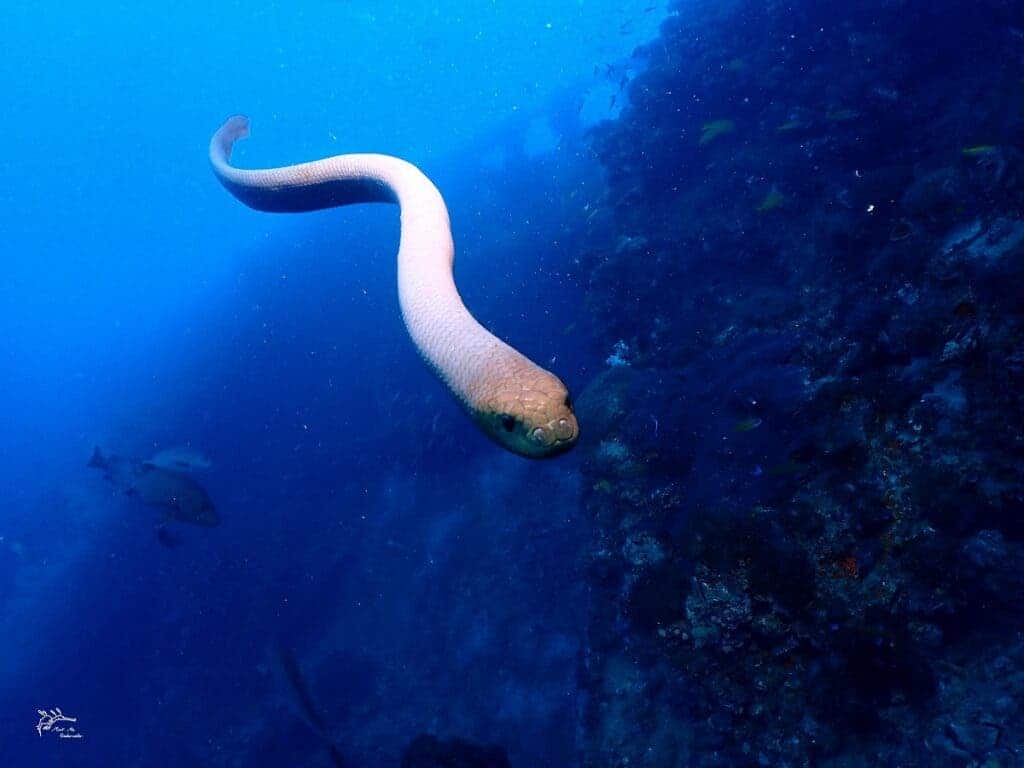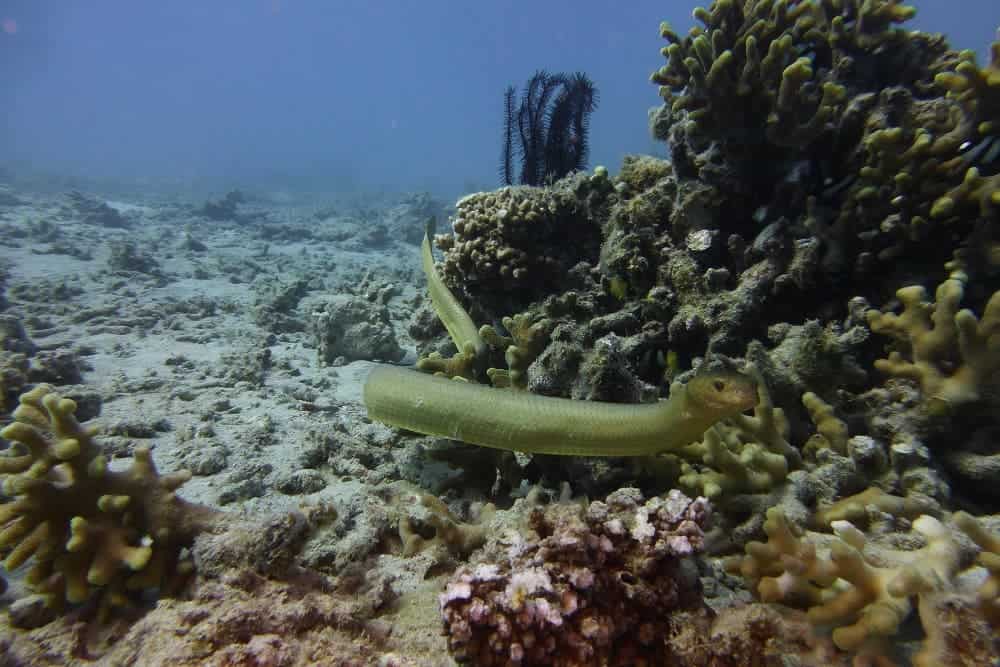
There has been a worrisome amount of documented attacks by venomous Olive sea snakes on scuba divers over the years. This has always struck marine biologists as very odd seeing how the vast majority of these encounters were unprovoked. A new study may finally explain what’s going on -and it’s not getting any less weird. Apparently, the snakes may be confusing the divers with potential mates, accidentally biting them as part of their courtship behavior.
According to an analysis of Olive sea snake encounters, researchers in Australia found that the vast majority of attacks were performed by males during the mating season, between May and August.
To some snakes, humans may look just like oversized females

Richard Shine, professor of biology at Macquarie University in Australia and corresponding author of the new study, knows firsthand about the bizarre behavior of Olive sea snakes (Aipysurus laevis). Between 1994 and 1995, Lynch had 158 encounters with these sea snakes, 74 of which resulted in approaches, while diving in the Great Barrier Reef. It was data on these encounters that Lynch and colleagues analyzed in order to spot any meaningful patterns that may explain some of these dangerous unprovoked attacks.
In general, although they’re greatly feared by humans, terrestrial snakes would much rather escape than confront an approaching person. Why would sea snakes be any different? What’s more, why would a snake approach and bite a human that has not harassed it, is obviously too large to constitute prey, and could easily be evaded by maneuvering around the coral? The researchers set out to answer these questions.
Looking closely at the encounter data, the researchers noticed that 39 of 58 approaches involved males while 35 of 100 were males. Outside the breeding season, males were rarely observed approaching divers, whereas the proportion of females approaching divers did not differ significantly between breeding and non-breeding seasons.
Another notable difference was that males were also more likely to tongue-flick divers. In 13 encounters, all during the breeding season, the sea snakes rapidly charged at divers aggressively. Charges involving males occurred immediately after an unsuccessful chase of a female or interaction with another rival male. In the rare instances that females charged a diver, they did so after they were chased by males and encountered the diver in their vicinity.
Three males were particularly odd, coiling around the diver’s fin, a behavior typically seen during courtship. Luckily, no bites were recorded during these interactions although the snakes struck at their reflections in camera lenses.
“However, snakes readily tried to bite when harassed during capture, or (especially) when handled on the boat after capture. Male snakes can be highly persistent in their attempts to approach divers. On one occasion the diver attempted to flee from a snake by swimming vigorously for 20 min but was unable to outpace his follower. When the diver finally stopped, the snake tongue-flicked him for a minute and then left,” the researchers wrote in the journal Scientific Reports.
Terrestrial snakes, the sister group to hydrophiinae like Olive sea snakes, rely on pheromones to locate and recognize females. However, such chemicals are not water-soluble and hence, cannot be detected from a distance in marine environments. And although Olive sea snakes have better visual acuity than some other species in their group, their eyesight is not nearly as good as their terrestrial cousins. They likely see quite poorly underwater.
Taken together, these observations seem to point to the idea that male Olive sea snakes mistake human divers for other male rivals or potential mates. This wouldn’t be the first time since this behavior is almost identical to that of males of the Turtle-headed sea snake (Emydocephalus annulatus).
However, the potential consequences are very different. While the Turtle-headed sea snake is small and non-toxic, the Olive sea snake is large and possesses a deadly venom, which is why the researchers ended their study on a cautionary note.
“If mistaken identity underlies most “attacks” by sea snakes on divers, the best strategy for divers in such a situation may be to allow the snake to investigate them and in particular to allow for the snake to investigate chemical cues with its tongue; a bite is unlikely unless the animal is threatened or injured. Attempting to flee is likely to be futile and may even increase the ardour of the pursuit; and attempting to drive the animal away may induce retaliation,” the researchers advised.


